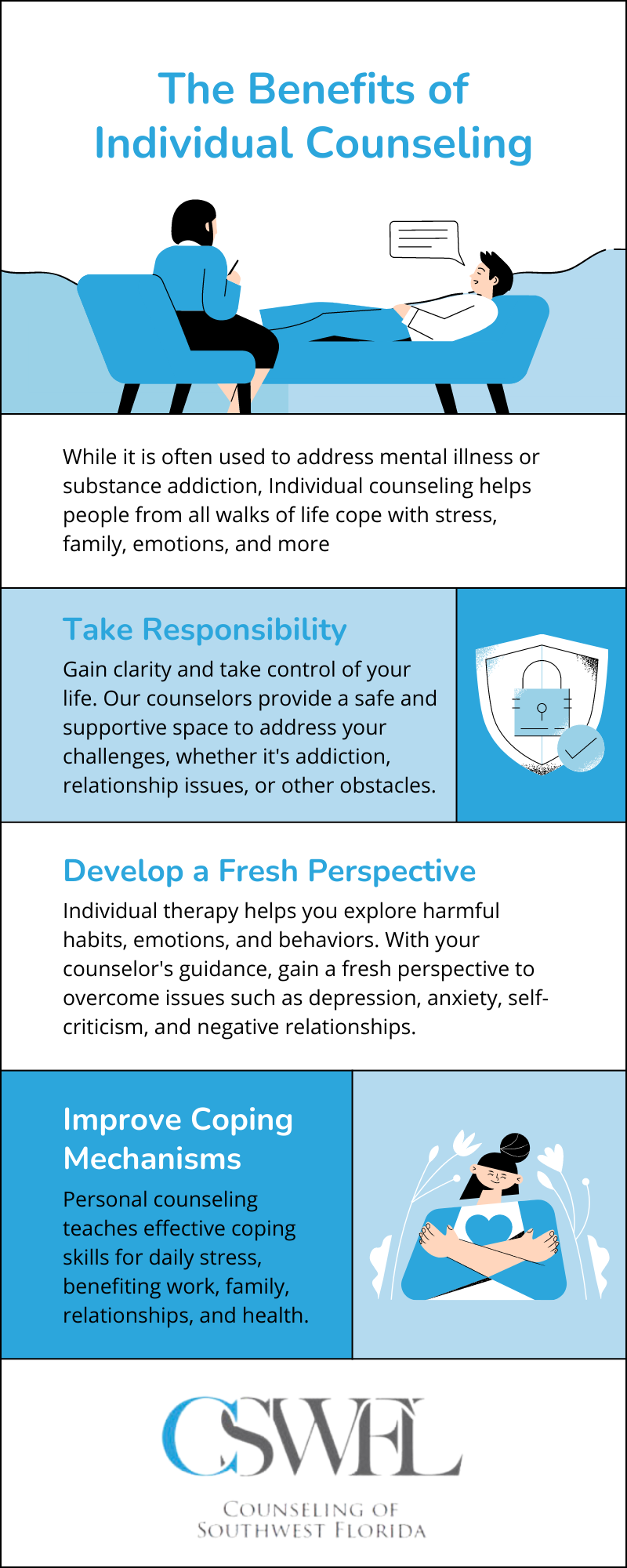Little Known Facts About Aim Point Counseling.
Little Known Facts About Aim Point Counseling.
Blog Article
Excitement About Aim Point Counseling
Table of ContentsThe Best Strategy To Use For Aim Point CounselingSome Ideas on Aim Point Counseling You Should KnowEverything about Aim Point CounselingNot known Facts About Aim Point CounselingNot known Facts About Aim Point CounselingThe Ultimate Guide To Aim Point Counseling
The longitudinal design includes a pre-treatment study and 2 follow-up studies at 3- and 12-months post-intervention. The research study is embeded in 8 Relationships Australia Victoria centres, throughout metropolitan, outer suburbs, and regional/rural sites. Relationships Australia, a non-government organisation, is the largest service provider of pair counselling and connection services in Australia.
In Australia, the average size of marital relationship before separation is 8.8 years, and roughly fifty percent of all separations entail couples with children [1] These high rates of partnership breakdown have been continually associated with adverse wellness consequences for both adults and youngsters following divorce/separation. These include isolation from support networks, and decreased earnings and requirement of living for both grownups and kids [3], problems of commitment over youngsters for men, and anxiety and loss of identity for women [4,5]
Everything about Aim Point Counseling
The effects of separation and splitting up can be damaging, research study suggests that high partnership dissonance in intact couples is additionally most likely to have adverse end results.
Research study to date has determined both couple and private aspects that may contribute to connection dissonance. These consist of partnership satisfaction and commitment at the couple degree, and depression at the specific degree.
The Single Strategy To Use For Aim Point Counseling
Relationship fulfillment has been the most usual result variable determined in greater than 200 assessments of couple coaching [11,12] Studies have found substantial enhancements in connection complete satisfaction from pre- to post-treatment [13,14] and over the program of one to 2 years complying with counselling [15] In these researches, partnership complete satisfaction was most regularly evaluated using the Dyadic Adjustment Range (DAS) [16] While many researches indicate enhancements in partnership fulfillment following couple coaching, they are restricted by the examples and procedures used, greatly short-term follow-up time frameworks, and evaluations that do not account for the dyadic nature of pair information - christian counseling. Partnership commitment, based on procedures such as the Dedication Supply (CI) [19], is another typically checked out partnership outcome.
To sum up, study indicates that couple-specific variables as well as individual elements may anticipate the results of couple therapy and connection services. The causal instructions of these partnerships, nevertheless, is less clear. These observations are very important, because, to justify and direct the application of relationship services such as pair therapy, empirical evidence must explore both the outcomes of partnership solutions and the factors that forecast effective treatment.
There is an expanding consensus that efficiency studies ought to be complemented by effectiveness study to best inform professional practice [ 29] The restricted effectiveness research that exists to date recommends that couple coaching can boost results such as relationship contentment [33,43], interaction skills and general health [44], at the very least in some European countries.

We presently know little regarding the accounts of pairs who seek out partnership education compared with those who seek partnership therapy, or the results of these programs. Anecdotal evidence suggests that there may be considerable distress among at the very least some couples seeking partnership education and learning.
Little Known Questions About Aim Point Counseling.
Comments includes participants completing surveys concerning their relationship (e.g. measures of interpersonal issues), and receiving details on what their ratings show. Cognitive-behavioural approaches use this link advertise transforming cognitions to promote favorable partnerships. These might include advertising sensible attributions/expectations around negative partner practices [46] Finally, in abilities training, couples attend talks or presentations on connection abilities, and practise these during facilitator-led activities [ 45]
These results have lingered for as much as 4 years in some studies [47] Nevertheless, these meta-analyses highlight restrictions in the existing literature on partnership education. Especially, the bulk of researches entailed pairs from top socio-economic histories who were not experiencing high connection discord [47,48] This sample profile might not stand for customers who normally present for connection education.
Getting The Aim Point Counseling To Work

Extremely little research study has examined the relative advantages of couple coaching and connection education programs. As clients are most likely to self-select into these service kinds, it is not clear whether characteristic partnership distress profiles existing to every service kind, or indeed whether there is an interaction in between providing account, service type and end result.
(https://sandbox.zenodo.org/records/177803)
Hence, we have actually consisted of a 12-month follow-up to assess longer-term patterns and effects.
We suggest to utilise multi-level analytical modelling treatments that regulate for the inter-dependence of pair information to evaluate any type of therapy impacts. The particular objectives of the ECC research are to: 1. Map accounts of customers seeking neighborhood agency-based couple coaching vs. partnership enhancement programs in regards to socio-demographic and connection signs (such as relationship fulfillment, relationship commitment, interpersonal troubles, and reasons for going to), in addition to wellness (such as anxiety, general wellbeing) and health solution usage (eg.
2. Identify whether couple coaching and partnership education solutions enhance 3- and twelve-month outcomes for relationship satisfaction, commitment, and anxiety, using analytical analyses suitable to combine information. 3. Figure out the relative payments of client variables (specific and pair) and therapy/education aspects to outcomes at 3- and 12-months, and to sustainability of outcomes gradually.
Things about Aim Point Counseling
Multi-level modelling to figure out pre-post differences, controlling for dyadic (couple) degree. To add to the literary works assessing the effectiveness of community-based pair therapy. The outcomes will assist clinical decision-making in community-based relationship solution setups, and specialist training. 3. To figure out the relative contributions of client/couple and therapy elements to outcomes at 3- and 12-months, and to sustainability of outcomes gradually.
Report this page